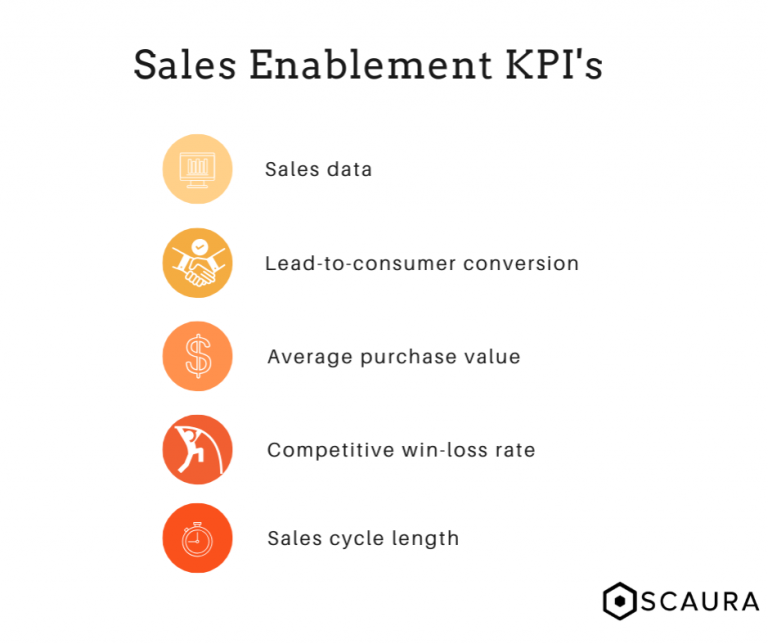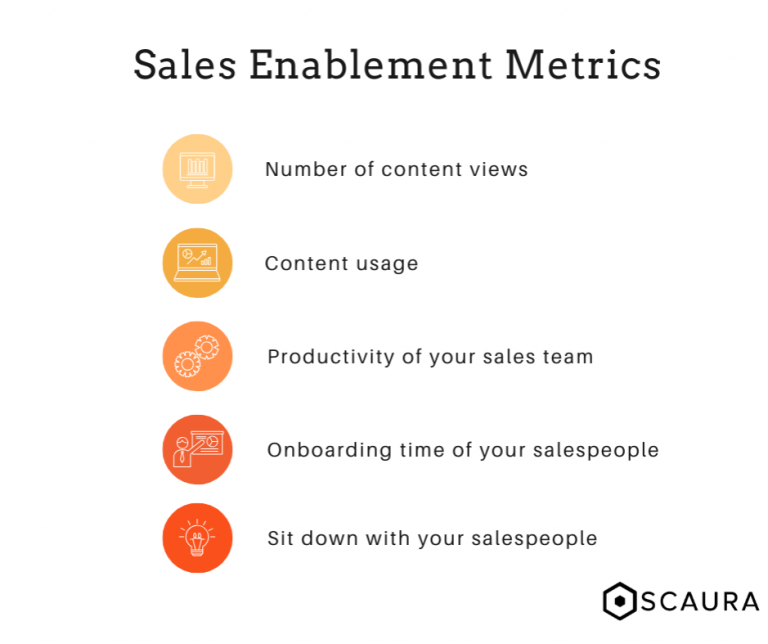
Sales enablement is all about helping your sales team be successful in their endeavors to future customers. It is about equipping your people with proper knowledge, tools, attitude and processes. All with one common goal: to capitalize on every sales opportunity. Improving productivity and generating more revenue, sales enablement done right can be a massive boost for your business.
In short, here are some of the benefits of integrating sales enablement into your business:
- Get qualified leads for your representatives, turning hail-shooting into sharp-shooting.
- Giving your sales team valuable insights into customer behavior, so they can tailor their message to whomever they are speaking to.
- Qualified leads combined with a powerful, tailor-made message results in high-quality meetings, drastically improving your representatives’ chances of closing a deal.
- Strengthening the relationship you have with existing customers. Knowing exactly what your current client base wants from you will enhance the relationship – no doubt.
Sales enablement metrics and KPI’s help you keep track of how you are performing. How to measure sales enablement is equally important as actually getting people out there in the field using your tailormade content.
What we will be looking at in this blog, is what the key performance indicators for sales are. We explain how to measure sales enablement, and at what indicators you should be looking to avoid getting lost in data while not improving on your performance.
What is the difference between metrics and KPI’s?
When talking about sales enablement metrics on one hand, and sales enablement KPI’s on the other, it is important to make the distinction between both. After all, both are heavily influenced by data.
Bluntly put, metrics are simply keeping track of the status of a specific business process. Key performance indicators, KPI’s, are values measured to show you how effective you are at achieving business objectives. These are the statistics that will show you whether your earlier call has been the right one.
What are important KPI’s for sales enablement?
Let’s start off with the data that shows you whether you are moving in the right direction. Sales enablement KPI’s can be different from one company to another when looking at the specifics, but in general it always comes down to these:

Sales data
A very straightforward KPI in sales enablement is your sales data. How much your Sales team brought in for a given period compared to a previous one and whether the sales targets set have actually been met. This can be measured by the number of deals closed by each representative as well as sales by region.
Lead-to-customer conversion
We could not leave this one out, could we? The most important aspect of a sales enablement strategy is to make sure your Salespeople are as effective in striking deals as they can be. Ultimately, the number of leads that are converted to customer will give you valuable insights.
Average purchase value
Revenue is an important part of any set of data you can get your hands on. Therefore, an important KPI for sales enablement is how much revenue the average closed sale has brought in for you.
Competitive win-loss rate
Enhancing the customer journey is a focal point in sales enablement. And quite often, your product or service is pinned against one of your competitors. This means the prospect will be going through both of your offers and need some serious convincing your company is the best fit for them. This win-loss rate will tell you a great deal about how sales enablement is actually giving your representatives the advantage.
Sales cycle length
Simply put, the amount of time between a lead becoming a customer, by closing a deal. Of course, there are many variables in play here, not in the least bit what the projected timeline of a prospect looks like. Understanding the average length of your sales cycle and the factors involved will help you win deals faster.
Sales enablement metrics you need to track
By now, we think we have established the fact you need a valid answer on the question: how to measure sales enablement? Not measuring properly means you are leaving a lot of money on the table.

In short, there is no easy way for you to measure everything when it comes to sales enablement. There are sales enablement statistics, however, that will give you the valuable insights needed to move forward. Let us have a better look at these nuggets.
Number of content views
Measuring the number of content views will tell you a lot about the engagement that the content is generating. Publishing your content also helps gathering data about who is watching it and how much it is influencing their decision to buy. Having a proper analytics tool is vital here.
Content usage
So, you have equipped your representatives with the tools needed to land that deal. But are you also measuring whether they are actually using the content? What if they are still using outdated, dodgy content? Yes, it is important to keep an eye out for the prospects, but your salespeople are equally important.
Productivity of your Sales team
The purpose of sales enablement is that your representatives spend more time closing deals. How your salespeople reach revenue goals within a certain timeframe is a metric you definitely want to keep an eye on. Once you figure out who is reaching the standards and who are not, you can alter your training and provide your people with the right tools to improve.
Onboarding time of your salespeople
Directly correlates with the productivity. However, getting representatives up to speed requires training. Measuring the time taken for a salesperson to get accustomed to your company, the processes, the do’s and don’ts with prospects will tell you whether your training methods are effective – or not. Using this data, you can increase the quality of your training, not only benefitting the new arrivals but also your existing team.
Sit down with your salespeople
Not exactly something that will fly by on a screen, but absolutely vital to get this one in here. Taking the time to evaluate with the representatives involved, will sometimes tell you a lot more than the numbers on your screen. At the end of the day, business is still about people. Not just the people buying your products, but also the people closing the deals for you. Ask for their input, what they feel is working and what needs to be changed. Use the intel along with the rest of the metrics to optimize.
How to measure sales enablement?
Earlier on we stated that there is no easy way to measure everything when it comes to sales enablement. There is a distinction however, that will tell you a lot about not only the prospects you are engaging with but also your own people.
First up, you have the metrics you assess reaction, learning and behavior. The sales enablement metrics involved here are:
- Number of content views
- Number of programs launched for your salespeople
- Number of programs completed by your representatives
- Number of certifications
- Number of video practices or calls recorded
- Number of coaching activities by your employees
The metrics mentioned above will give your insight in how content is used, how involved your salespeople are and what response your content is getting.
But of course, you need more than this, right? Since you are a business, you absolutely need to measure results on a business level as well. Sales enablement, done correctly, will show you the results of all of the hard work.
- Time to first activity
- Time to first deal
- Time to 50% quota
- Time to 80% quota
- Time to 100% quota
Simply put, you are measuring the impact of your decisions and subsequent revenue generated.
We will be honest with you, having the right sales enablement software will allow you to track literally anything concerning the sales activities of your business. This does not mean however, that you should be spending your days tracking every single metric.
At all times, keep an eye out for your KPI’s. Second to that, make a conscious decision on the metrics you are tracking that are supporting you and your sales team reaching these standards.
That is all for now regarding KPI’s and metrics. We would love to tell you, nay, show you more of what proper sales enablement software can do for you. Head over to https://www.scaura.com/demo and schedule a free demo today!
